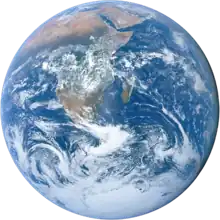
Introduction
.jpg.webp)



Language is a structured system of communication that consists of grammar and vocabulary. It is the primary means by which humans convey meaning, both in spoken and written forms, and may also be conveyed through sign languages. The vast majority of human languages have developed writing systems that allow for the recording and preservation of the sounds or signs of language. Human language is characterized by its cultural and historical diversity, with significant variations observed between cultures and across time. Human languages possess the properties of productivity and displacement, which enable the creation of an infinite number of sentences, and the ability to refer to objects, events, and ideas that are not immediately present in the discourse. The use of human language relies on social convention and is acquired through learning.
Estimates of the number of human languages in the world vary between 5,000 and 7,000. Precise estimates depend on an arbitrary distinction (dichotomy) established between languages and dialects. Natural languages are spoken, signed, or both; however, any language can be encoded into secondary media using auditory, visual, or tactile stimuli – for example, writing, whistling, signing, or braille. In other words, human language is modality-independent, but written or signed language is the way to inscribe or encode the natural human speech or gestures.
Depending on philosophical perspectives regarding the definition of language and meaning, when used as a general concept, "language" may refer to the cognitive ability to learn and use systems of complex communication, or to describe the set of rules that makes up these systems, or the set of utterances that can be produced from those rules. All languages rely on the process of semiosis to relate signs to particular meanings. Oral, manual and tactile languages contain a phonological system that governs how symbols are used to form sequences known as words or morphemes, and a syntactic system that governs how words and morphemes are combined to form phrases and utterances.
The scientific study of language is called linguistics. Critical examinations of languages, such as philosophy of language, the relationships between language and thought, how words represent experience, etc., have been debated at least since Gorgias and Plato in ancient Greek civilization. Thinkers such as Jean-Jacques Rousseau (1712–1778) have argued that language originated from emotions, while others like Immanuel Kant (1724–1804) have argued that languages originated from rational and logical thought. Twentieth century philosophers such as Ludwig Wittgenstein (1889–1951) argued that philosophy is really the study of language itself. Major figures in contemporary linguistics of these times include Ferdinand de Saussure and Noam Chomsky. (Full article...)
Selected language -
Italian (italiano [itaˈljaːno] ⓘ or lingua italiana [ˈliŋɡwa itaˈljaːna]) is a Romance language of the Indo-European language family that evolved from the Vulgar Latin of the Roman Empire. Italian is the least divergent Romance language from Latin, together with Sardinian. Spoken by about 85 million people (2022), Italian is an official language in Italy, San Marino, and Switzerland (Ticino and the Grisons), and is the primary language of Vatican City. It has official minority status in Croatia and in some areas of Slovenian Istria.
Italian is also spoken by large immigrant and expatriate communities in the Americas and Australia. Italian is included under the languages covered by the European Charter for Regional or Minority Languages in Bosnia and Herzegovina and in Romania, although Italian is neither a co-official nor a protected language in these countries. Some speakers of Italian are native bilinguals of both Italian (either in its standard form or regional varieties) and a local language of Italy, most frequently the language spoken at home in their place of origin. (Full article...)Did you know (auto-generated)
- ... that while Philippine Spanish has been described as an endangered language, a new generation of speakers has emerged?
- ... that Chava Shapiro published the first feminist manifesto in Hebrew, lamenting the absence of women's voices in the language's literature?
- ... that actress Jacqui Purvis performed her character's wedding vows in te reo Māori during the 8000th episode of Home and Away?
- ... that foreign nationals wishing to gain Philippine citizenship need to demonstrate proficiency in English or Spanish as well as a Philippine language?
- ... that the Ocoee salamander from Tennessee is named after the Cherokee word for Passiflora incarnata (passionflower)?
- ... that the author of In the Land of Invented Languages lived in the same town as a fluent Klingon speaker?
More did you know -
- ...that Otomi grammar, the grammar of the indigenous Otomi language of Mexico has traits of active/stative alignment, but has no adjectives?
- ...that Albert White Hat, translator for the movie Dances With Wolves, taught the Lakota language at Sinte Gleska University?
- ...that in 1998, the Hopi Dictionary: Hopìikwa Lavàytutuveni, the first comprehensive Hopi language dictionary, was almost prevented from being published for fear of having non-Hopis learning the language?
- ...that the Native American Languages Act of 1990 was the first time Congress gave official status to Native American languages for the purpose of conducting tribal business?
Categories
Linguistics: Computational linguistics • Grammar • Historical linguistics • Morphology • Phonetics • Phonology • Pragmatics • Reading • Semantics • Sociolinguistics • Syntax • Writing
Languages: Language families • Pidgins and creoles • Sign languages
Linguists: By nationality • Historical linguists • Morphologists • Phoneticians • Phonologists • Sociolinguists • Syntacticians • Translators
Stubs: Constructed languages • Languages • Linguists • Pidgins and creoles • Typography • Vocabulary and usage • Writing systems
Full Language category tree |
|---|
|
Select [►] to view subcategories
Language Languages Outlines of languages Language acquisition Language-related awards Language comparison Language competitions Natural language and computing Language in fiction Language games Gender in language Language identifiers Language interpretation Language movements Language preservation Language reform Linguistics Language mechanics Language and mysticism Oral communication Personifications of languages Philology Philosophy of language Language policy Self-reference Sign language Sociology of language Language software Speech Speech and language pathology Statements Terminology Vocabulary Works about language Writing Language stubs |
Related portals
Selected topic -
The Berber languages, also known as the Amazigh languages or Tamazight, are a branch of the Afroasiatic language family. They comprise a group of closely related but mostly mutually unintelligible languages spoken by Berber communities, who are indigenous to North Africa. The languages are primarily spoken and not typically written. Historically, they have been written with the ancient Libyco-Berber script, which now exists in the form of Tifinagh. Today, they may also be written in the Berber Latin alphabet or the Arabic script, with Latin being the most pervasive.
The Berber languages have a similar level of variety to the Romance languages, although they are sometimes referred to as a single collective language, often as "Berber", "Tamazight", or "Amazigh". The languages, with a few exceptions, form a dialect continuum. There is a debate as to how to best sub-categorize languages within the Berber branch. Berber languages typically follow verb–subject–object word order. Their phonological inventories are diverse. (Full article...)Selected picture -

The Rosetta Stone is an ancient Egyptian granodiorite stele inscribed with a decree issued at Memphis in 196 BC on behalf of King Ptolemy V. The decree appears in three scripts: the upper text is Ancient Egyptian hieroglyphs, the middle portion Demotic script, and the lowest Ancient Greek.
Language News
- 1 January 2024 – Public Domain Day
- The animated short film Steamboat Willie, the German-language version of the novel All Quiet on the Western Front, and other works published in 1928 enter the public domain in the United States. (Mashable)
- 26 July 2023 – 2023 Malian constitutional referendum
- Mali downgrades the French language from official language to working language in accordance with the new constitution. (Africanews)
Topics
Languages of Africa: Arabic, Chadic, Cushitic, Kanuri, Maasai, Setswana, Swahili, Turkana, Xhosa, Yoruba, Zulu, more...
Languages of the Americas: Aleut, Carib, Cherokee, Inuktitut, Iroquois, Kootenai, Mayan, Nahuatl, Navajo, Quechuan, Salish, American Sign Language, more...
Languages of Asia: Arabic, Assamese, Balochi, Bengali, Chinese, Japanese, Hajong, Hebrew, Hindustani, Kannada, Kokborok, Marathi, Khasi, Korean, Kurdish, Malayalam, Manipuri, Meithei, Mongolian, Persian, Rajasthani, Sindhi, Sanskrit, Sylheti, Tamil, Tanchangya, Tulu, Telugu, Tibetan, Thai, Turkish, Vietnamese, Khowar, more...
Languages of Austronesia: Austric, Fijian, Hawaiian, Javanese, Malagasy, Malay, Maori, Marshallese, Samoan, Tahitian, Tagalog, Tongan, Auslan, more...
Languages of Europe: Basque, Czech, Danish, Dutch, English (book), French, German, Greek, Italian, Latin, Leonese, Norwegian, Polish, Portuguese, Romanian, Russian, Slovak, Spanish, Ukrainian more...
Constructed languages: Esperanto, Ido, Volapük, more...
Agglutinative language, Analytic language, Constructed language, Creole, Context-free language, Extinct language, Dialect, Fusional language, Inflectional language, International language, Isolating language, Language isolate, National language, Natural language, Pidgin, Pluricentric language, Polysynthetic language, Proto-language, Sign language, Spoken language, Synthetic language, Variety (linguistics)

Applied linguistics, Cognitive linguistics, Accent (dialect), Computational linguistics, Descriptive linguistics, Eurolinguistics, Generative linguistics, Historical linguistics, Lexicology, Lexical semantics, Morphology, Onomasiology, Phonetics, Phonology, Pragmatics, Prescription, Prototype semantics, Psycholinguistics, Semantics, Stylistics, Sociolinguistics, Syntax
See also: List of linguists

Alphabets: Arabic alphabet, Bengali alphabet, Cyrillic alphabet, Hebrew alphabet, Latin alphabet, more...
Other writing systems: Abjad, Abugida, Braille, Hieroglyphics, Logogram, Syllabary, SignWriting, more..
See also: History of the alphabet, Script
Associated Wikimedia
The following Wikimedia Foundation sister projects provide more on this subject:
-
 Commons
Commons
Free media repository -
 Wikibooks
Wikibooks
Free textbooks and manuals -
 Wikidata
Wikidata
Free knowledge base -
 Wikinews
Wikinews
Free-content news -
 Wikiquote
Wikiquote
Collection of quotations -
 Wikisource
Wikisource
Free-content library -
 Wikiversity
Wikiversity
Free learning tools -
 Wiktionary
Wiktionary
Dictionary and thesaurus
Find a language
| Enter an ISO 639 code to find the corresponding language article |
-
 List of all portals
List of all portals -

-

-

-

-

-

-

-

-

-
 Random portal
Random portal -
 WikiProject Portals
WikiProject Portals
